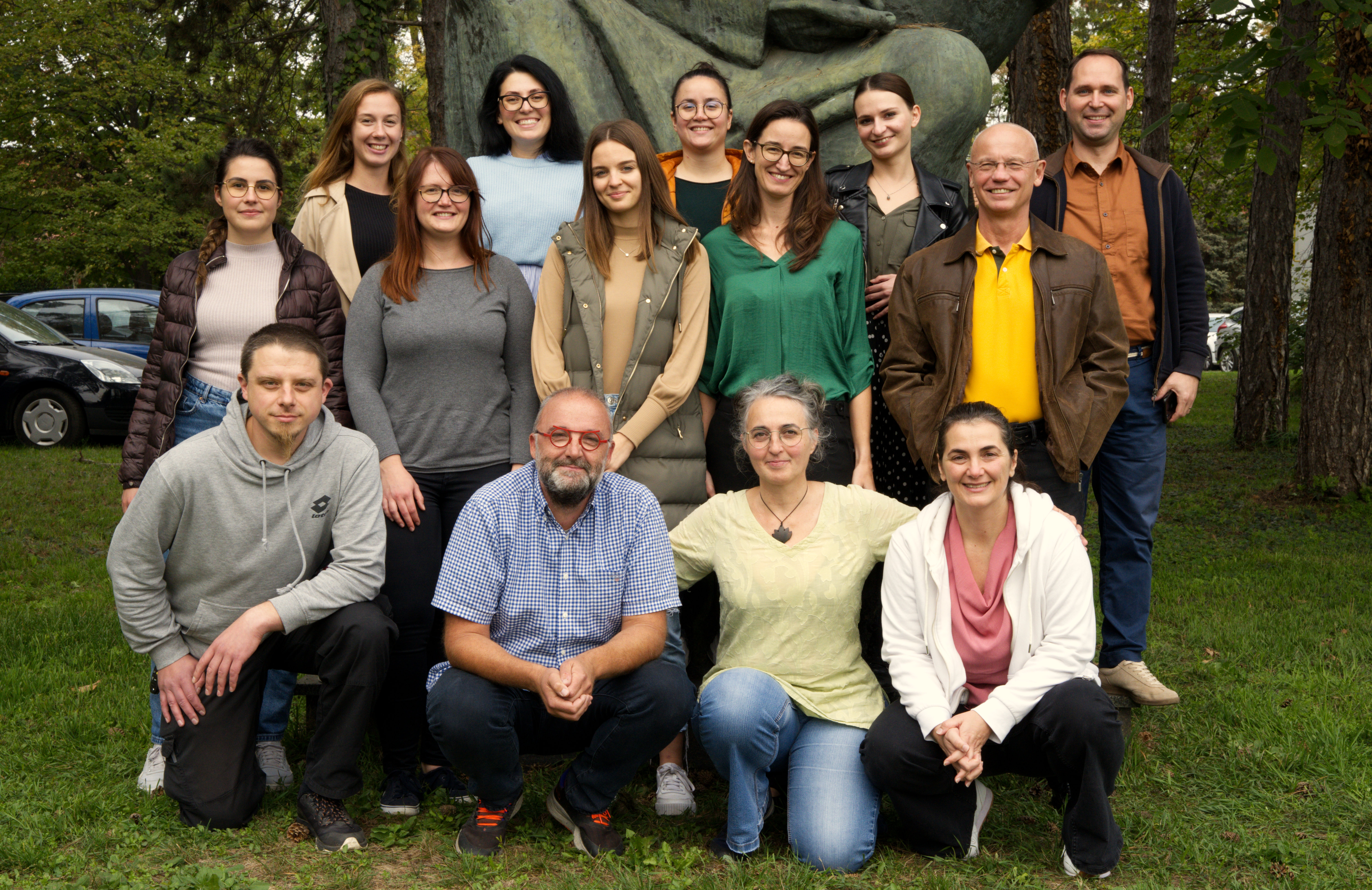The Laboratory for Precipitation Processes, founded in 1968, has a long-standing tradition of studying the kinetics and mechanisms of precipitation in model systems such as calcium and magnesium phosphates, carbonates, oxalates, and sulfates. Initially aimed at building a fundamental theoretical understanding of precipitation, this research has evolved toward solving real-world challenges in environmental, industrial, and technological systems.
Current research continues and expands upon these foundations, integrating new expertise and methodologies across three main areas:
- Fundamental investigations of sparingly soluble salt precipitation in the presence of organic molecules, microplastics, and metal oxides;
- Development and application of materials using radiation technology, particularly ionizing radiation;
- Studies of biological and geochemical processes in tufa formation and their significance for the stability and preservation of aquatic ecosystems.
Fundamental research on precipitation processes focuses on the interactions of sparingly soluble salts with organic molecules, microplastics, and metal oxides. Special emphasis is placed on studying the interactions between calcium carbonate (CaCO₃) and microplastics, with the aim of understanding their impact on the structure and properties of hard tissues in calcifying aquatic organisms. In parallel, interactions between CaCO₃ and organic molecules are investigated to clarify their role in biomineralization. As part of the applied aspect of this research, metal oxides are also synthesized, followed by the treatment of solid surfaces with composites containing calcium carbonate, metal oxide nanoparticles of various sizes and morphologies, and metal ions, with the goal of developing new antimicrobial and biocompatible materials.
In parallel, the Laboratory for Precipitation Processes also conducts research aimed at the application and development of materials using ionizing radiation and radiation technologies, covering several complementary areas. The focus is on the functionalization of materials through the development of complex thin films with specific properties, intended for a wide range of applications, from medical solutions to the protection and preservation of cultural heritage. At the same time, new materials are being developed, including the synthesis of polymer structures such as conductive gels, drug carriers, and protective coatings, with radiation serving as the key enabling technique. Additionally, research is being carried out on the resistance of materials to various external influences, with the aim of understanding their behavior under demanding conditions and optimizing their practical application.
Alongside the research areas mentioned above, the Laboratory also focuses on the biological and geochemical aspects of tufa formation processes and the preservation of aquatic ecosystems. Particular attention is given to identifying the factors that influence these processes, with climate change, especially rising temperatures and eutrophication, at the center of concern. The research primarily addresses freshwater tufa-forming systems but also includes the marine environment, with a special focus on coral reefs as primary indicators of environmental change. Furthermore, special attention is given to the emission of greenhouse gases (methane) and to factors that influence its formation, release, and degradation.
Equipment
- Gemini 2380 (Micromeritics) – device for measuring specific surface area and mesoporosity of inorganic materials
- LAMBDA 36 (Perkin Elmer) – UV-VIS spectrophotometer
- TENSOR II (Bruker) – FTIR spectrometer
- TG 50 + TC 11 processor (Mettler Toledo) – thermogravimetric analyzer
- ICS1000 and ICS1100 (Dionex) – ion chromatographs
- Dataphysics OCA25 – goniometer for contact angle measurement and droplet contour analysis
- Palmsens4 – potentiostat/galvanostat/frequency analyzer
- Palmsens4 – potentiostat/galvanostat/frequency analyzer with low current measurement module (pA)
- PAR 263 A – potentiostat/galvanostat
- TGA 4000 (Perkin Elmer) – thermogravimetric analyzer
Thermal analysis instruments procured as part of the OZIP project (Netzsch):
-
DSC 404 F1 Pegasus (Netzsch) – differential scanning calorimeter
-
STA 449 F5 Jupiter (Netzsch) – simultaneous thermal analyzer
-
FTIR TENSOR II – TGA-IR (Bruker) – STA 449 F5 Jupiter (Netzsch) – QMS 403 Aëolos Quadro – coupled system


